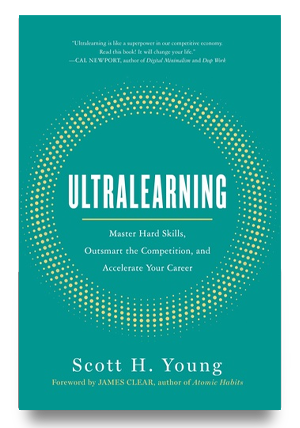I made a mistake in empathy that cost me tens of thousands of dollars.
It wasn’t a case of bad customer service or a botched partnership. It was something a lot simpler: I didn’t understand how people read blogs.
I thought people read blogs as I did, subscribed to only a few, with the queue of unread posts mostly empty. When I stop regularly reading a blog, I unsubscribe. And, I typically pay more attention to my 10-12 RSS subscriptions than my email inbox which can get hundreds of emails each day.
But it turns out I was wrong. First, people pay more attention to email. I get more email response for my newsletters than blog comments, despite having only a fraction of the subscribers. Second, few people purge their RSS subscriptions, meaning email gets read and RSS does not.
Because I didn’t understand people, I spent the first four years of my blog emphasizing RSS. And based on my subscription rates, I likely paid the price in tens of thousands of subscribers and dollars.
Empathy Missteps: Why We Fail to Understand People
I made a mistake in empathy: I failed to understand how people think.
Although we routinely think of mistakes in empathy as being grossly insensitive, that’s not the case. My bias towards RSS wasn’t because I didn’t care about my readers. It also wasn’t because I lacked common sense (although in hindsight, it is certainly obvious).
The real problems of empathy are both subtler and far more costly than we imagine. We all remember the dates than went badly because of poor communication. But we can’t remember all the relationships that never even began because we didn’t see the opportunity.
The empathy problem pervades more than just relationships. Design, programming, sales and even writing an email are all informed by our ability to connect with how people think.
I’ve noticed most empathy failures fall into one of two categories (assuming you’re actually trying to understand the other person):
- Believing other people think like you, when they don’t.
- Not understanding how you actually think
My story was a clear example of the first case. Of course, if most people actually used RSS as I did, then my strategy would have been spot on. I often skim emails, but I read nearly every post in my reader or I unsubscribe.
My failure of empathy was in using myself as the model for others, when that model was broken.
In the second case, you have an idealized version of how you think and act, but it doesn’t fit reality.
As a writer, I’ve had to deliberately train myself to understand that almost all people skim when reading. This feels unnatural because, after spending so much time writing, you believe people will hang on your every word. Good writers are able to divorce themselves from their writing and see their work as a bystander would.
Both these cases make empathy difficult: being a lousy example and not understanding your behavior even when you are.
Improving Empathy
If the problems of empathy are so costly, how do you fix them?
A good first rule of thumb is to watch what people do, not what they say. I’m always skeptical of any polls that rely on people’s stated opinions. Stated opinions are biased, we reveal ourselves in our actions.
A perfect example was a post I wrote about adding a subscription popup to the bottom of this website. The vast majority of comments were negative, which I completely understand (I don’t like seeing them either).
But that doesn’t mean they don’t work. I went from a couple new subscribers each day to 20-30. That’s a tenfold increase with no noticeable impact on traffic.
This doesn’t mean that the original dissenters were wrong (I was one of them). Usability is important and I’m still trying to make the popup more user-friendly. However, some people must find them useful otherwise there wouldn’t be a nearly 1000% difference in results.
I believe behavior is a better model because of the second case of empathy failure: people don’t really understand their own actions. We view ourselves as largely rational, smart, deliberate beings. But our actual thought processes are a lot more impulsive and easily biased.
Look for Attention Asymmetries
Another good heuristic is to be on the lookout whenever you’re paying more attention than the other person.
When I’m writing a sales letter, for example, I’ll spend hours trying to pick the correct words when the person reading will only invest a minute or two to read. This means it’s easy to miss the most obvious information and focus on details the reader doesn’t care about.
Writing an email to a person who gets tons of email is another example. They may only have a couple seconds to skim the email to see if it’s worth a response.
Dealing with asymmetries of attention requires a lot of testing and a thick skin. Because the investment is so lop-sided, the casual mistake is to infer too much, not too little. I’ve made the mistake in the past of assuming a sales letter failed because the product was doomed, or that an email garnered no response because the person was disinterested. It may be simply that the subject line was off.
Learning Empathy
We usually view empathy as something instinctive. It’s something you’re either good at, or you’re not. But, I’d prefer to see it as something that is trained with experience.
This means the only surefire way to be more empathetic is to interact with people constantly. I believe most of the subtle, yet costly, problems of empathy stem from not spending enough time interacting with the people you’re trying to understand.
The problem with empathy is that we don’t believe it’s important enough. We invest hundreds of hours trying to get results—in business, in relationships, in life—but less time trying to deeply understand how other people think and feel. But if those results come from other people, ultimately empathy is what we need most.


 I'm a Wall Street Journal bestselling author, podcast host, computer programmer and an avid reader. Since 2006, I've published weekly essays on this website to help people like you learn and think better. My work has been featured in The New York Times, BBC, TEDx, Pocket, Business Insider and more. I don't promise I have all the answers, just a place to start.
I'm a Wall Street Journal bestselling author, podcast host, computer programmer and an avid reader. Since 2006, I've published weekly essays on this website to help people like you learn and think better. My work has been featured in The New York Times, BBC, TEDx, Pocket, Business Insider and more. I don't promise I have all the answers, just a place to start.